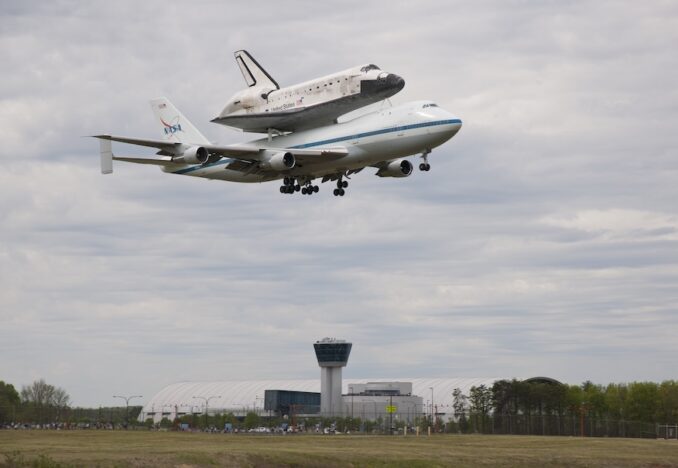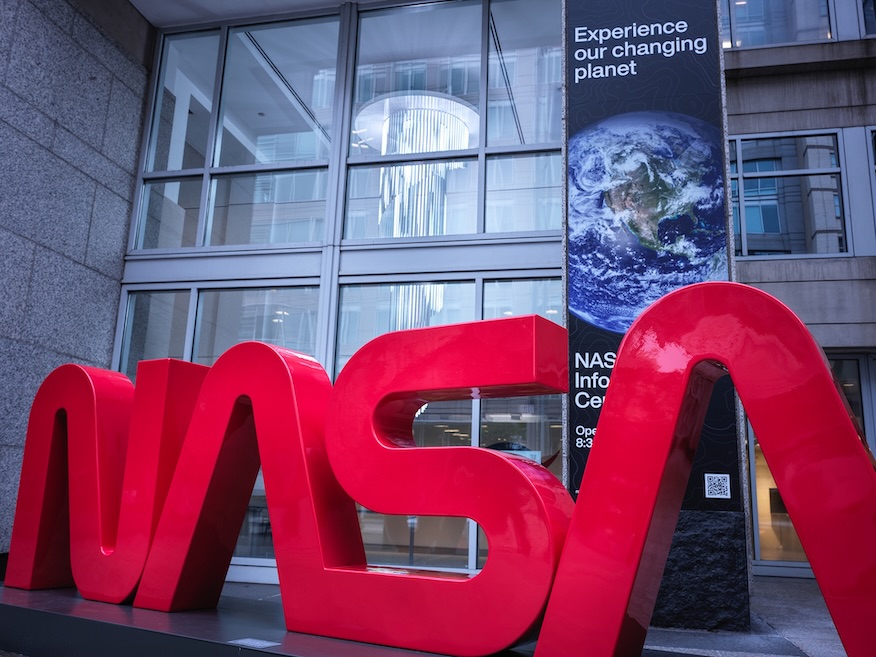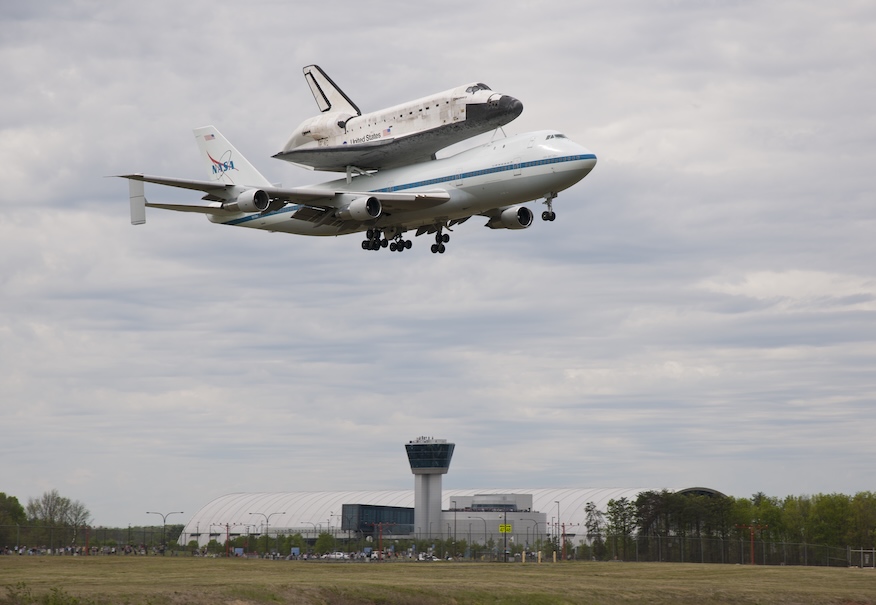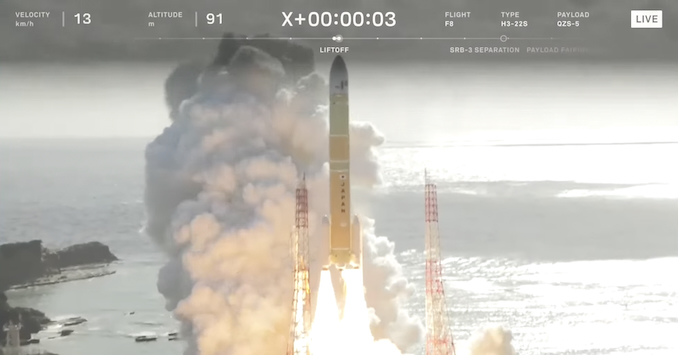Now Reading: Republican-backed reconciliation bill passes, includes funding for ISS, Artemis programs, Space Shuttle relocation
-
01
Republican-backed reconciliation bill passes, includes funding for ISS, Artemis programs, Space Shuttle relocation
Republican-backed reconciliation bill passes, includes funding for ISS, Artemis programs, Space Shuttle relocation


A massive tax and spending package passed by the Senate on Wednesday was approved by the House on Thursday and signed by President Donald Trump on Friday, July 4.
The bill, H.R. 1, also referred to as the ‘One Big Beautiful Bill’ Act, was passed through the reconciliation process, meaning it required a simple majority in both chambers of Congress, avoiding impacts from the filibuster.
It is separate from the Fiscal Year 2026 appropriations bills, which include the funding for NASA’s budget along with other agencies, however, there are provisions that do concern America’s space agency.
Moon and Mars
The legislation earmarks $9.995 billion to be available until Sept. 30, 2032, for projects that have backing by politicians in states that have held key roles in NASA’s Artemis program.
The biggest chunk of that is $4.1 billion set aside “for the procurement, transportation, integration, operation and other necessary expenses of the Space Launch System for Artemis Mission 4 and 5.” The bill states that no less than $1.025 billion should be spent on the heavy lift rocket each year FY26-FY29.
It also includes $20 million to fund the Orion spacecraft “for use with the Space Launch System on the Artemis 4 Mission and reuse in subsequent Artemis Missions.”
These two items run counter to the proposed NASA budget from the White House, which sought to end the SLS and Orion programs following the launch of the Artemis III mission.
The bill also preserves funding to the tune of $2.6 billion for the Gateway, a lunar space station being built through international cooperation from countries, like Canada, Japan, the United Arab Emirates and the European Space Agency (ESA). The legislation states that at least $750 million should be spent on the Gateway during Fiscal Years 2026, 2027 and 2028.
Both Northrop Grumman and Thales Alenia Space serve as prime contractors for Gateway for the HALO (Habitation and Logistics Outpost) and I-HAB (International Habitation) modules respectively. Maxar Technologies was selected as the prime on the PPE (Power and Propulsion Element) module.
The PPE and HALO are scheduled to launch onboard a SpaceX Falcon Heavy rocket no earlier than December 2027, less than a year earlier than the planned Artemis 4 mission, but a report published by the U.S. Government Accountability Office (GAO) in July 2024 expressed some concerns regarding NASA’s mass management plan.
The bill also includes $700 million for a new undertaking referred to as “a high-performance Mars telecommunications orbiter.” The legislation necessitates that it work both for the Mars Sample Return mission, which the White House also wants nixed, and for future Mars missions, both crewed and robotic.
A stipulation for the funds is that it must go to a commercial company that received funding from NASA in FY24 or FY25 for commercial designs for a MSR mission. That company also needs to be able to deliver such an orbiter by the end of 2028.
Space station, space centers and space shuttle
H.R. 1 funds the International Space Station to the tune of $1.25 billion, with the order that the funds be dolled out in increments of no less than $250 million during FY25-29.
The White House is seeking to greatly reduce the amount of funds that go towards both operations of the ISS as well as the science conducted onboard.
$325 million is also set aside to fulfill a contact with SpaceX that NASA announced in June 2024. This is for the development and delivery of the U.S. Deorbit Vehicle, which is designed to slowly lower the orbit of the space station before bringing it down over the Pacific Ocean after the end of its operational life in 2030.
The legislation sets aside $1 billion for unspecified “improvements” to the “manned spaceflight centers” of NASA, which include:
- $300 million – Johnson Space Center (Houston, Texas)
- $250 million – Kennedy Space Center (Cape Canaveral, Florida)
- $120 million – Stennis Space Center (Pearlington, Mississippi)
- $100 million – Marshall Space Flight Center (Huntsville, Alabama)
- $30 million – Michoud Assembly Facility (New Orleans, Louisiana)

There is also $85 million put aside for the transfer of a space vehicle. The bill doesn’t offer specifics on this, but both of Texas’ Republican senators, John Cornyn and Ted Cruz backed a proposal to relocate the Space Shuttle Discovery from its current location in the Smithsonian’s National Air and Space Museum in Washington D.C. to JSC.
Cornyn introduced the “Bring the Space Shuttle Home” Act in April, which was co-sponsored by Cruz.
“There is no better final home for Space Shuttle Discovery than JSC, where these explorers of tomorrow can learn from and be inspired by the incredible legacy of those who changed the history of the world in Houston, where giant leaps in human spaceflight started,” said Gov. Abbott in a letter of support dated June 6, 2025.
“We would have to take the Shuttle apart to move it at this point,” said Lori Garver, the former NASA Deputy Administrator under President Barack Obama, wrote on X. “The aircraft transport was decommissioned and it wouldn’t hold up that distance on a barge or highway (bridges/trees/power lines). If this is the priority for our tax dollars, we are doomed.”
Stay Informed With the Latest & Most Important News
Previous Post
Next Post
-
 01From Polymerization-Enabled Folding and Assembly to Chemical Evolution: Key Processes for Emergence of Functional Polymers in the Origin of Life
01From Polymerization-Enabled Folding and Assembly to Chemical Evolution: Key Processes for Emergence of Functional Polymers in the Origin of Life -
 02Panasonic Leica Summilux DG 15mm f/1.7 ASPH review
02Panasonic Leica Summilux DG 15mm f/1.7 ASPH review -
 03Two Black Holes Observed Circling Each Other for the First Time
03Two Black Holes Observed Circling Each Other for the First Time -
 04How New NASA, India Earth Satellite NISAR Will See Earth
04How New NASA, India Earth Satellite NISAR Will See Earth -
 05And Thus Begins A New Year For Life On Earth
05And Thus Begins A New Year For Life On Earth -
 06Astronomy Activation Ambassadors: A New Era
06Astronomy Activation Ambassadors: A New Era -
07SpaceX launch surge helps set new global launch record in 2024



















